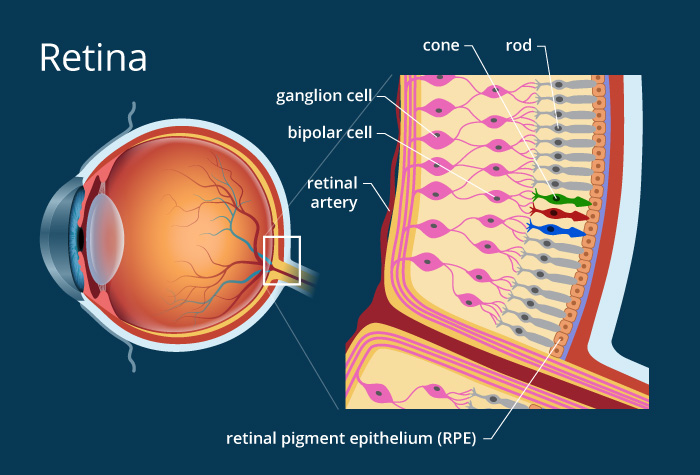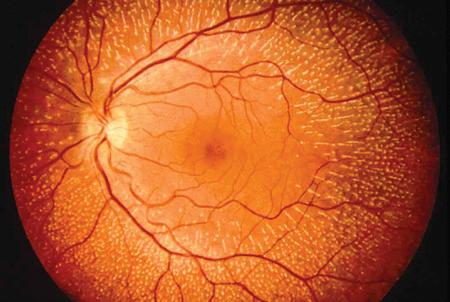

Retina, layer of nervous tissue that covers the inside of the back two-thirds of the eyeball, in which stimulation by light occurs, initiating the sensation of vision. The retina is actually an extension of the brain, formed embryonically from neural tissue and connected to the brain proper by the optic nerve.
The retina is a complex transparent tissue consisting of several layers, only one of which contains light-sensitive photoreceptor cells. Light must pass through the overlying layers to reach the photoreceptor cells, which are of two types, rods and cones, that are differentiated structurally by their distinctive shapes and functionally by their sensitivity to different kinds of light. Rods predominate in nocturnal animals and are most sensitive to reduced light intensities; in humans they provide night vision and aid in visual orientation. Cones are more prominent in humans and those animals that are active during the day and provide detailed vision (as for reading) and colour perception. In general, the more cones per unit area of retina, the finer the detail that can be discriminated by that area. Rods are fairly well distributed over the entire retina, but cones tend to concentrate at two sites: the fovea centralis, a pit at the rear of the retina, which contains no rods and has the densest concentration of cones in the eye, and the surrounding macula lutea, a circular patch of yellow-pigmented tissue about 5 to 6 mm (0.2 to 0.24 inch) in diameter.
This serious eye condition happens when your retina — a layer of tissue at the back of your eye that processes light — pulls away from the tissue around it. Since the retina can’t work properly when this happens, you could have permanent vision lossif you don’t get it treated right away.
Who’s at Risk?
You’re more likely to get one if you:
- Are severely nearsighted
- Have had an eye injury or cataract surgery
- Have a family history of retinal detachment
What Are the Symptoms?
A detached retina doesn’t hurt. It can happen with no warning at all. But you might notice:
- Flashes of light
- Seeing lots of new “floaters” (small flecks or threads)
- Darkening of your peripheral (side) vision
